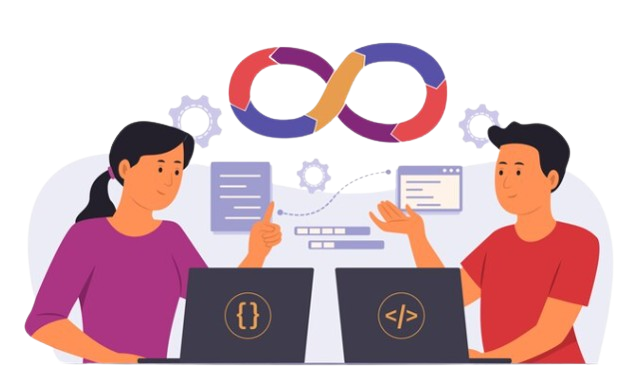To thrive in the world of DevOps, embrace observability as a fundamental practice. Invest in the right tools, instrument your systems, and cultivate a culture of collaboration and continuous improvement, centered around observability in DevOps. Observability is your window into the inner workings of your systems, and with it, you can navigate the complexities of the digital age with confidence.
In the fast-paced world of software development and operations, ensuring the reliability and performance of complex systems is paramount. This is where observability in DevOps comes into play. Observability is not just a buzzword; it’s a critical practice that enables teams to gain deep insights into their systems, detect issues, and troubleshoot them effectively. In this blog post, we will dive into the world of observability, exploring its significance, principles, and how it empowers teams to monitor and troubleshoot complex systems with precision.
The Quest for Resilience
In today’s digital landscape, systems are becoming increasingly intricate. Cloud-native applications, microservices architectures, and distributed systems have made it challenging to pinpoint the source of problems when they occur. Achieving resilience in such environments requires more than just traditional monitoring; it requires observability.
What Is Observability?
Observability is the practice of gaining insights into the internal state of a system by analyzing its external outputs. It goes beyond traditional monitoring, which often focuses on collecting metrics and alerts. Observability encompasses metrics, logs, traces, and other telemetry data, providing a holistic view of system behavior.

The Three Pillars of Observability
Observability relies on three core pillars:
- Metrics
Metrics are quantitative data points that provide a snapshot of system health. They include measures like CPU usage, response times, error rates, and more. Metrics help teams identify performance bottlenecks and anomalies.
- Logs
Logs offer a detailed narrative of what’s happening within a system. They provide context for troubleshooting by capturing events, errors, and user interactions. Logs are invaluable for understanding the sequence of events leading up to an issue.
- Traces
Traces provide end-to-end visibility into transactions as they traverse a system. They enable teams to trace requests across microservices, identify latency issues, and understand dependencies.
The Role of Instrumentation
To achieve observability, systems must be properly instrumented. This involves adding code to applications and infrastructure components to collect and emit telemetry data. Without instrumentation, observability is limited, and teams are left in the dark when issues arise.
Real-time Insights
Observability equips teams with real-time insights into their systems. When an issue occurs, engineers can quickly access relevant data to understand its root cause. This reduces mean time to resolution (MTTR) and minimizes the impact on users.
Troubleshooting Made Efficient
Traditional troubleshooting often involves guesswork and time-consuming manual processes. With observability, teams have a treasure trove of data at their fingertips. They can correlate metrics, logs, and traces to pinpoint the exact location and cause of an issue.
Scaling with Complexity
As systems grow in complexity, observability becomes indispensable. It scales with your systems, allowing you to maintain control and reliability, even in highly intricate environments.
The Human Element
Observability isn’t just about tools and data; it’s about people. It fosters collaboration among development, operations, and quality assurance teams. Engineers can share insights, collaborate on troubleshooting, and collectively ensure system reliability.
Tools for Observability
A variety of tools and platforms exist to facilitate observability, including Prometheus, Grafana, ELK Stack (Elasticsearch, Logstash, Kibana), Jaeger, and more. These tools help teams collect, store, analyze, and visualize observability data.
The Future of Observability
As technology continues to evolve, observability will play an increasingly vital role. Artificial intelligence and machine learning will be used to automate issue detection, predict failures, and offer proactive recommendations.
Conclusion: Embracing Observability
Observability is the linchpin of modern DevOps practices. It empowers teams to monitor and troubleshoot complex systems effectively, ensuring high availability and performance. Tanbits offers DevOps services, including observability-driven strategies, ensuring clients have the tools and practices needed for navigating the complexities of the digital age with confidence.
To thrive in the world of DevOps, embrace observability as a fundamental practice. Invest in the right tools, instrument your systems, and cultivate a culture of collaboration and continuous improvement, centered around observability in DevOps. Observability is your window into the inner workings of your systems, and with it, you can navigate the complexities of the digital age with confidence.
In a world where downtime is costly and user experience is paramount, observability is not just an option; it’s a necessity for any organization committed to delivering top-tier digital services. So, start your observability journey today and embark on a path toward greater reliability, efficiency, and customer satisfaction, emphasizing observability in DevOps.
BACK










